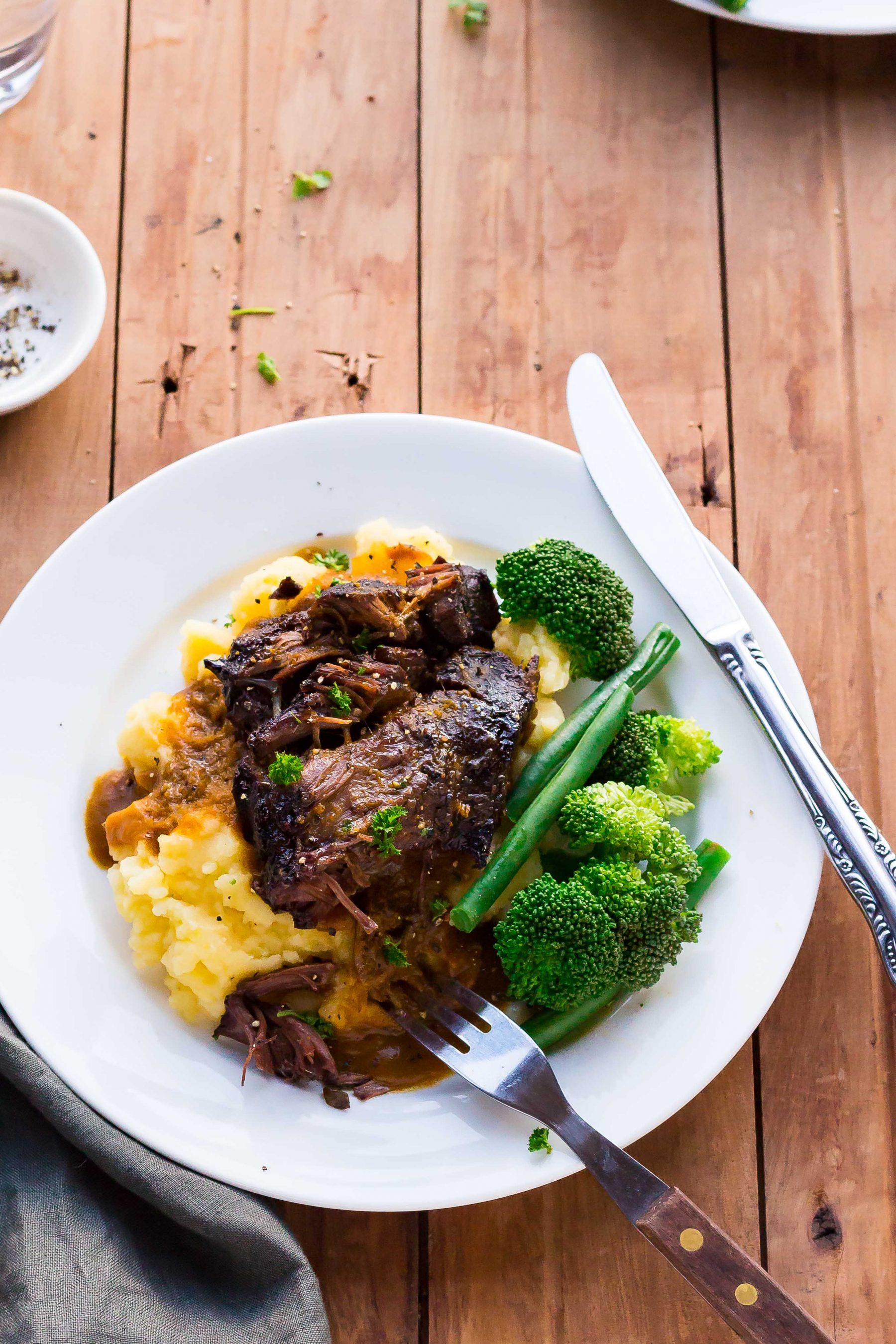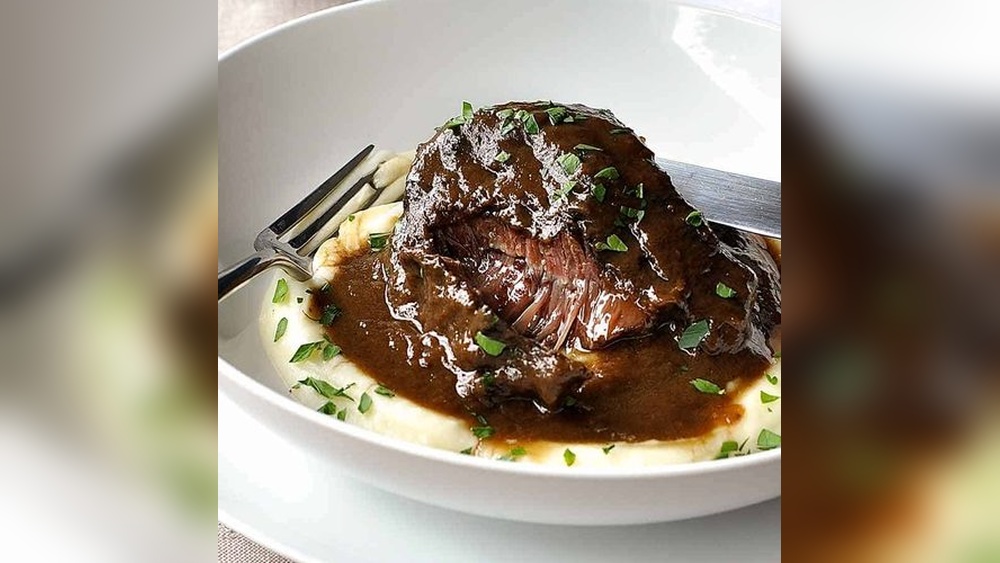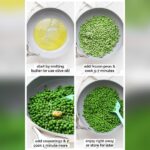If you’ve never cooked beef cheeks before, you’re in for a delicious surprise. This underrated cut of meat is packed with rich flavor and becomes incredibly tender when cooked the right way.
But here’s the catch: beef cheeks need patience and the right technique to transform into a melt-in-your-mouth dish. Wondering how to make this tough cut soft, juicy, and full of taste? Keep reading, because we’ll guide you step-by-step on how to cook beef cheeks perfectly every time—whether you’re using a slow cooker, oven, or pressure cooker.
Get ready to impress your taste buds and anyone you share this hearty meal with!

Choosing Beef Cheeks
Beef cheeks are a tough cut of meat that needs careful selection. Choose cheeks with a deep red color and some marbling. The fat adds flavor and keeps the meat moist while cooking. Avoid cheeks that look dry or pale.
Buy beef cheeks from trusted butcher shops or stores with good meat quality. Some grocery stores carry them, but specialty meat markets often have fresher options. Ask if the cheeks are fresh and not frozen for better taste.
| What to Look For | Where to Buy |
|---|---|
|
|
Preparing The Meat
Start by rinsing the beef cheeks under cold water. Use a sharp knife to trim off any fat or silver skin. This helps the meat cook evenly and taste better. Make sure to remove any tough or hard pieces.
Pat the meat dry with paper towels before seasoning. Use salt and pepper as a basic seasoning. Add garlic powder or smoked paprika for extra flavor. Rub the spices gently over all sides of the cheeks.
Let the meat rest for at least 30 minutes to absorb the spices. This step makes the beef cheeks more flavorful and tender during cooking.
Cooking Methods
Slow cooking beef cheeks helps break down tough fibers. This method uses low heat for several hours. It makes the meat very tender and full of flavor. Use a slow cooker or a heavy pot on low heat. Add broth, vegetables, and spices to enhance taste.
Pressure cooking speeds up the process. It cooks beef cheeks in about 1 to 1.5 hours. The meat becomes soft quickly without losing flavor. Use enough liquid to avoid burning. This is great for busy days.
Oven braising means cooking beef cheeks in a covered dish at low heat. Keep the oven around 300°F (150°C). Cook for 3 to 4 hours with broth and vegetables. The meat stays juicy and tender.
Sous vide is a precise cooking method. Seal beef cheeks in a bag and cook in water at 165°F (74°C) for 24 to 48 hours. This keeps the meat moist and soft. It takes longer but gives excellent results.
Enhancing Flavor
Browning beef cheeks in a hot pan creates a rich, deep flavor. Use a heavy skillet and cook until a golden crust forms. This step locks in juices and improves texture.
Choose aromatics like garlic, onions, and herbs to add layers of taste. Spices such as cumin or black pepper work well. They enhance the natural beef flavor without overpowering it.
Pick the right liquids for slow cooking. Beef broth, red wine, or stock are great choices. These liquids keep the meat moist and tender during cooking. They also add a subtle richness to the dish.
Tenderizing Tips
The low and slow cooking method is key for tender beef cheeks. Cooking at a low temperature for several hours breaks down tough fibers, making the meat soft. Use a slow cooker or simmer gently on the stove. Avoid high heat to prevent toughness.
Marinating beef cheeks helps add flavor and tenderize. A simple marinade with acidic ingredients like vinegar, lemon juice, or wine softens the meat. Combine with herbs, garlic, and a little oil for better taste. Let the cheeks soak for at least 4 hours or overnight.
Serving Suggestions
Beef cheeks pair well with creamy mashed potatoes or roasted root vegetables. These sides balance the rich, tender meat perfectly.
For a fresh touch, serve with steamed green beans or a simple mixed green salad. They add color and a light crunch.
| Sauce | Flavor Notes | Why It Works |
|---|---|---|
| Red Wine Reduction | Rich and deep | Enhances the beef’s natural flavors |
| Garlic and Herb Sauce | Fresh and aromatic | Adds brightness to the dish |
| Mustard Cream Sauce | Creamy with a tangy kick | Balances the richness with acidity |
Storing And Reheating
Store beef cheeks in an airtight container. Keep them in the fridge for up to 3 days. For longer storage, freeze the meat. Thaw it slowly in the fridge before reheating.
Reheat gently to keep the meat moist and tender. Use low heat on the stove or in the oven. Avoid high heat to prevent drying out.
Adding a splash of broth or water helps keep beef cheeks juicy. Cover the dish while reheating to trap steam. Stir occasionally to heat evenly.


Frequently Asked Questions
What Cooking Method Would You Choose When Cooking Beef Cheeks And Why?
Choose slow cooking or braising for beef cheeks. This method breaks down tough fibers, making meat tender and flavorful.
What’s The Secret To Flavorful Beef Cheeks?
Sear beef cheeks first to lock in flavor. Then, cook low and slow with broth, garlic, onions, and spices for tenderness.
What Is The Best Way To Tenderize Beef Cheeks?
The best way to tenderize beef cheeks is to cook them low and slow. Use a pressure cooker to reduce time while achieving fall-apart tenderness. Slow braising in broth or wine also softens the meat and enhances flavor.
Are Beef Cheeks Hard To Cook?
Beef cheeks require slow, low-temperature cooking to become tender. They absorb flavors well and are easy to prepare.
Conclusion
Beef cheeks become tender with slow, gentle cooking. Browning them first adds rich flavor. Use a pot with broth, garlic, and spices for best results. Cooking low and slow breaks down tough fibers. A pressure cooker can reduce cooking time.
Serve beef cheeks with your favorite sides. Enjoy a delicious, hearty meal anyone can make. This cut offers great taste without fuss. Try cooking beef cheeks for a satisfying dinner.

Yes, working as , Food Blogger and Product Reviewer for last 6 years. Here you will get amazing deals for Smart kitchen products. I am your best source for the latest update in cooking trends. I provide insightful articles, reviews, and analysis on cutting-edge kitchen gadget. My mission is to empower readers with the knowledge they need to stay ahead in a rapidly evolving coking world. Join me as we explore the future of food technology and how it shapes our lives today and tomorrow.





